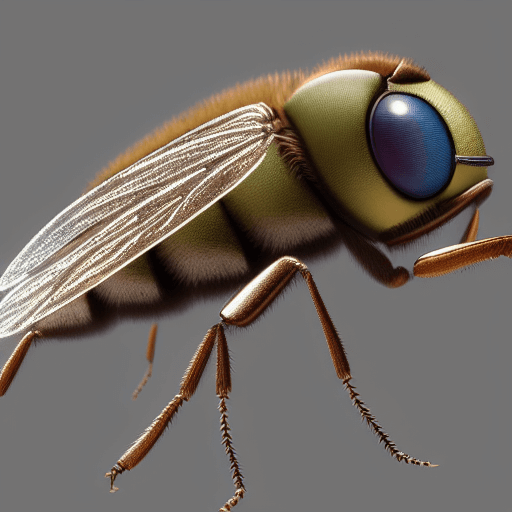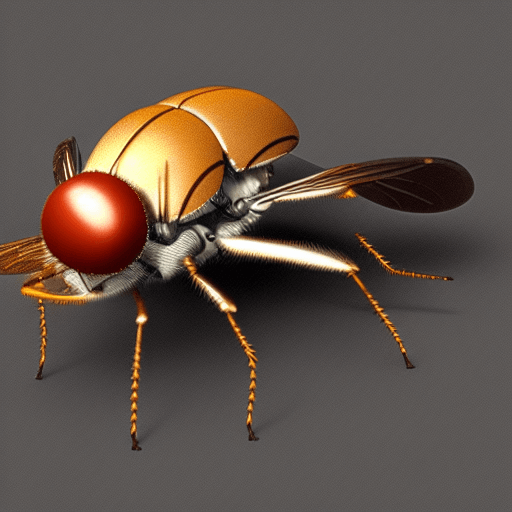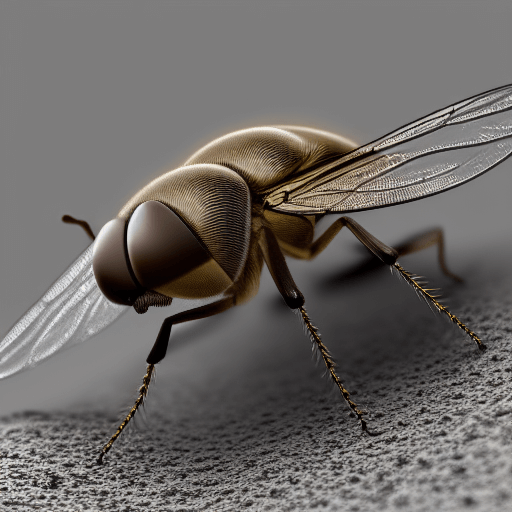How many eyes do flies have?
Believe it or not, this is a question that has puzzled scientists for years.
Now, a new study has finally answered the question.
Flies do have eyes, but they are very different from the eyes of other animals.
Let’s examine a fly’s eyes and their eyes help them survive in the world.

Flies have two large compound eyes, each made up of thousands of individual facets or ommatidia.
Explain It To A Child
Many species of fly have compound eyes. This means that their eyes are made up of lots of tiny lenses. This gives them a wide field of view and the ability to see in almost all directions at once.
These facets act like a camera lens, and together they form the fly’s visual field. Each facet contains a light-sensitive receptor that detects different colors and shapes.
This allows flies to see in all directions at once and to detect movement even in complete darkness.
How many eyes do flies have
Most species of fly have compound eyes, which are made up of thousands of tiny individual lenses.
This gives them a wide field of view and the ability to see in almost all directions at once.
A Fly Has 4,000 – 4,500 Lenses!
However, it also means that they have poor depth perception.
As a result, they often mistake reflective surfaces for open spaces and end up flying into windows or other obstacles.
In terms of the total number of eyes, flies fall somewhere in the middle of the insect world. Some species, such as bees and wasps, have just two eyes, while others, such as dragonflies, can have as many as 30.
However, most flies fall somewhere in the middle, with four to six eyes on each side of their head.
How many lenses does a fly have?

Fly eyes are among the largest and most complex in the insect world.
Each eye is divided into approximately 6,000 tiny units, called ommatidia.
- Each ommatidium contains its own lens, which helps the fly to see in multiple directions at once.
- In total, a fly has about 12,000 lenses, making it one of the most sensitive insects to light.
- The compound eyes of a fly are so sensitive that they can even detect ultraviolet light, which is invisible to humans.
This ability makes it easier for flies to find food and mates, as well as to avoid predators.
In fact, some scientists believe that the compound eyes of a fly may be one of the reasons why they have been so successful as a species.
What is the function of compound eyes on flies?

Insects have compound eyes, which are made up of many individual units called ommatidia.
Each ommatidium is a tiny eye that collects light and sends visual information to the brain.
The number of ommatidia in a compound eye can vary widely but is typically in the hundreds or thousands. Insects with large numbers of ommatidia have better vision than those with fewer ommatidia.
Compound eyes are very sensitive to movement, so they are particularly well-suited for detecting predators or prey.
They also allow insects to see in ultraviolet light, which helps them navigate by flower nectar or other UV-reflecting objects.
Compound eyes have many advantages, but they also have some disadvantages. For example, they cannot form images of stationary objects, so they are not well-suited for tasks like reading or writing.
Nevertheless, compound eyes are an efficient and versatile type of eye that has evolved to meet the needs of many different types of insects.
What are the structures of a fly’s eyes?

Fly’s eyes are one of the most complex eyes in the animal kingdom.
Each eye is composed of thousands of individual lenses, which are arranged in a hexagonal pattern.
This configuration gives flies an extremely wide field of view and allows them to see in almost every direction at once.
The lenses are also highly sensitive to light, allowing flies to detect even the slightest movements.
In addition to their large number of lenses, flies also have three different types of photoreceptors, which give them the ability to see in both ultraviolet and infrared light.
As a result, flies have an incredibly sharp vision that allows them to spot prey from great distances.
How do flies’ eyes compare to other animals’ eyes?
The fly’s eye is an amazing structure, and it differs in several ways from the eyes of other animals.
- For one thing, the fly’s eye is compound, meaning that it is made up of many individual units, or ommatidia. This gives the fly’s eye a wide field of view, and also allows the creature to see in ultraviolet light.
- In addition, the fly’s eye has a very high resolution, meaning that it can see fine details that other creatures would miss.
- Finally, the fly’s eye is incredibly sensitive to movement, allowing the fly to avoid predators and capture prey with ease.
All of these factors combine to make the fly’s eye one of the most incredible eyes in the animal kingdom.
What are the benefits of a fly’s eye?
Flies have four times as many light-sensitive cells in their eyes as humans, giving them exceptional vision.
Range Of Colors
They can also see a wider range of colors, including ultraviolet light. This allows them to spot potential mates from a distance and navigate their way around obstacles.
Visual Processing
Flies are able to process visual information much faster than we can. This is because their brains are organized differently from ours, with each eye sending information directly to the fly’s central nervous system. As a result, flies are able to react quickly to changes in their environment, making them difficult prey for predators.
Scientific Study
The unique structure of the fly’s eye also makes it an important tool in scientific research. By mimicking the design of the fly’s eye, researchers have been able to develop more efficient solar panels and create new types of cameras that can see around corners.
The fly’s eye may be small, but it has inspired some big ideas.
So the next time you see a fly buzzing around, take a moment to appreciate the complex structure of its eyes.
Article Sources
Jacks of Science sources the most authoritative, trustworthy, and highly recognized institutions for our article research. Learn more about our Editorial Teams process and diligence in verifying the accuracy of every article we publish.
